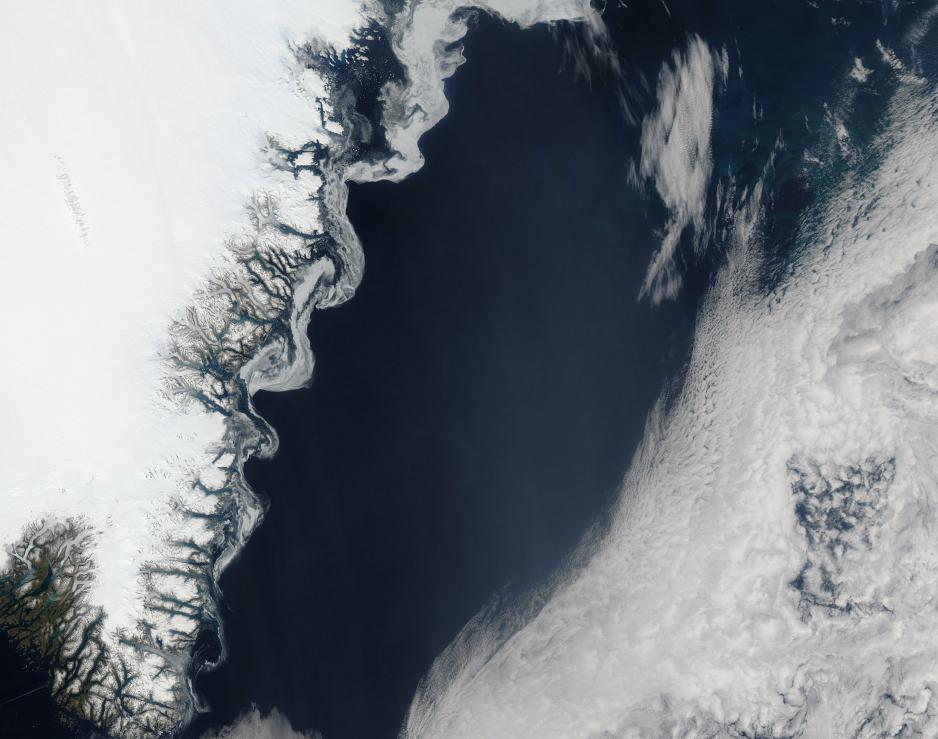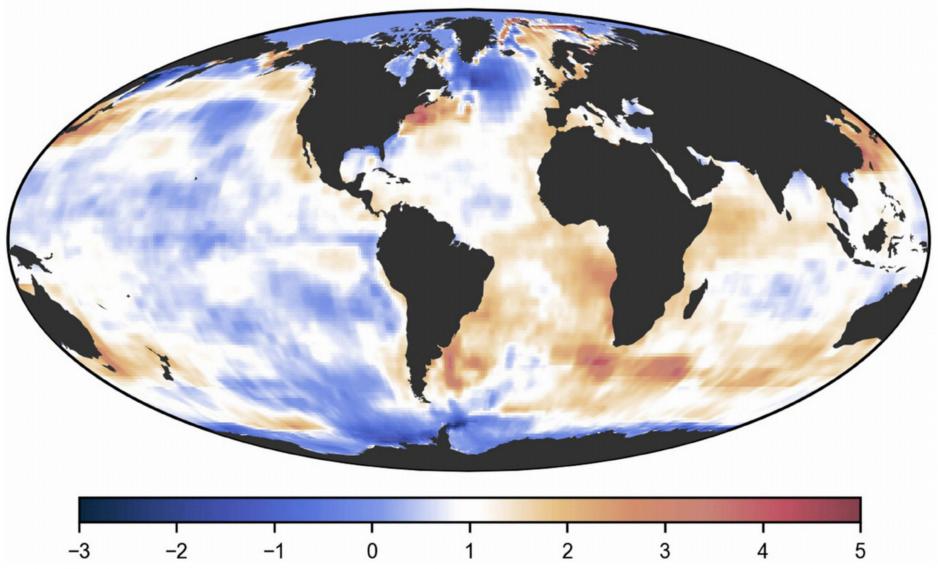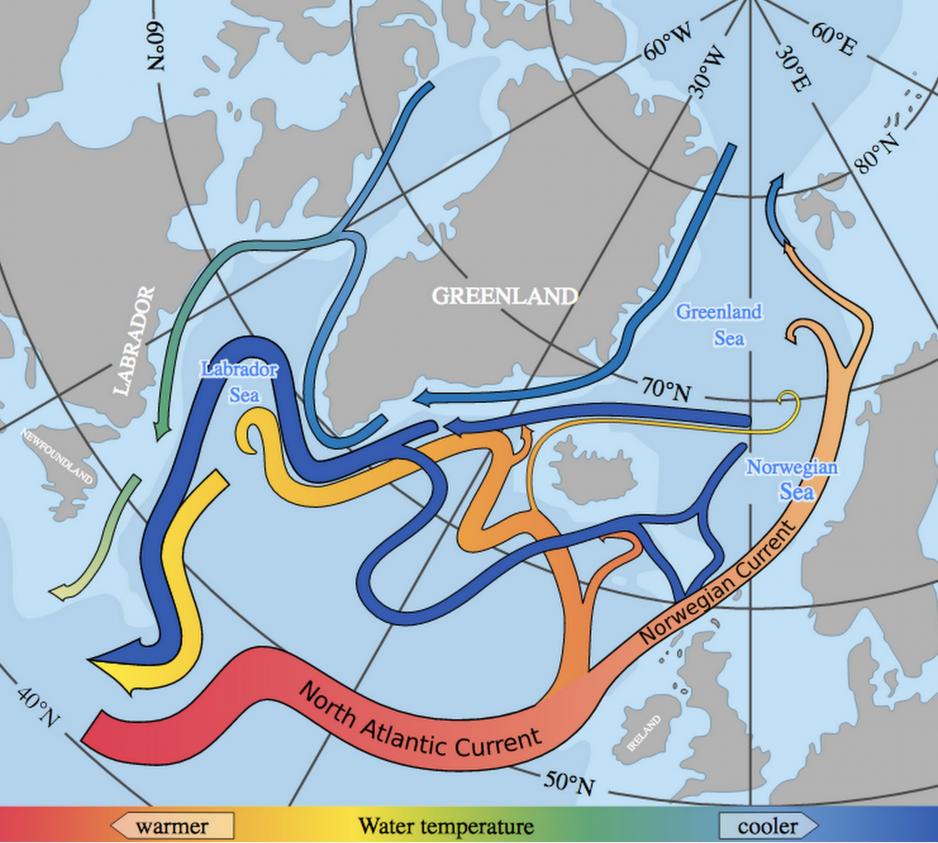Atlantic Gulf Stream System Slows Down

Ice-free East Greenland Sea during the summer months. (Source: NASA/Jeff Schmaltz).
Scientists find a 15 percent slowdown of the Gulf Stream since the mid-20th century. Changes in Atlantic Ocean circulation may have an impact on weather patterns and extreme weather across Europe and North America.
A new study published in Nature this week finds a 15 percent slowdown of the Atlantic meridional overturning circulation (AMOC) – a system of ocean currents, including the Gulf Stream – since the mid-20th century.
The AMOC is a key component of the Earth’s climate system and redistributes heat from the tropics to the polar region across the Atlantic Ocean. As the system of ocean currents slows down, it transports less heat northward, resulting in changes to ocean surface temperatures.
The study observed a cooling trend in the subpolar waters of the North Atlantic and above-average warming off the coast of North America.

Levke Caesar. (Photo: Potsdam Institute for Climate Impact Research)
Heat waves in Europe
Scientist warn that changes to this circulation could have sustained impacts on climate and weather patterns across the mid-latitudes of Europe and North America. In fact, recent heat waves in Europe may be related to these changes in the AMOC.
“The AMOC weakening may already have an impact on weather in Europe. One example is that cold sea surface temperatures in the subpolar Atlantic correlate with high summer temperatures over Europe, and the 2015 European heat wave has been linked to the anomalously cold temperatures in the subpolar North Atlantic that year,” explains Levke Caesar the study’s lead author and researcher at the Potsdam Institute for Climate Impact Research.

Observed Sea Surface Temperature trends during 1870–2016 show a cooling in the subpolar waters and a warming along the North-American coast. (Source: Courtesy of Levke Caesar et al. )
Climate models vs. Observed temperatures
In order to show a slow-down of the AMOC the researchers compared data from climate models to the observed temperature records. The study employed a high-resolution climate model which simulates the impacts of CO2 emissions.
The model suggested a spatial and seasonal pattern of temperature anomalies; cooler waters south of Greenland and warmer waters along the Gulf Stream during parts of the year. This same anomaly was found in the observed temperature measurements since the mid-20th century.
“The pattern can in its combination be explained by an AMOC slowdown”, states Caesar. A slow-down of the AMOC reduces the heat transport northward resulting in cooler waters in the North Atlantic and more heat remaining along the East Coast of the United States.
Causes for AMOC slowdown
The AMOC is complex system where warmer and colder waters interact and create a continuous circulation.
Colder and saltier waters of the North Atlantic are heavier and sink below where they are subsequently transported southwards, rise to the surface and form the Atlantic Overturning circulation.
“The weakening of the AMOC is caused by a number of factors that can be linked to global warming including meltwater from Arctic sea ice and the Greenland ice sheet as well as increased rainfall over the North Atlantic,” explains Caesar.
Increasing amounts of fresh water flowing into the waters around Greenland have led to a dilution of these waters, making them lighter and thus hindering the formation of the deep water circulation.

Schematic of the North Atlantic current, part of the AMOC, transporting warmer and colder waters. (Source: Courtesy of NASA)
Impact of AMOC slowdown on Europe
The slowdown of the AMOC may be a culprit in recent weather extremes in western Europe. Lower sea surface temperatures across the subpolar Atlantic allow for warmer air to be channeled into Europe.
Warmer air masses hold more moisture resulting in more intense storms and higher amounts of rainfall.
“Model simulations suggest that an AMOC weakening could become the main cause of future west European summer atmospheric circulation changes, as well as potentially lead to increased storminess in Europe,” adds Caesar.
Furthermore, as the AMOC is an important part of the global climate system it is key to understand how close the circulation may be slowing down even further. “The AMOC has a defined critical threshold for collapse, thus it is of great importance to determine how close we are to this threshold,” Caesar urges.
While climate models are in agreement about predicting the observed slowdown as a result of increasing CO2 emissions, they differ on the timing and amount of weakening. This aspect requires further investigation, the study concludes.

